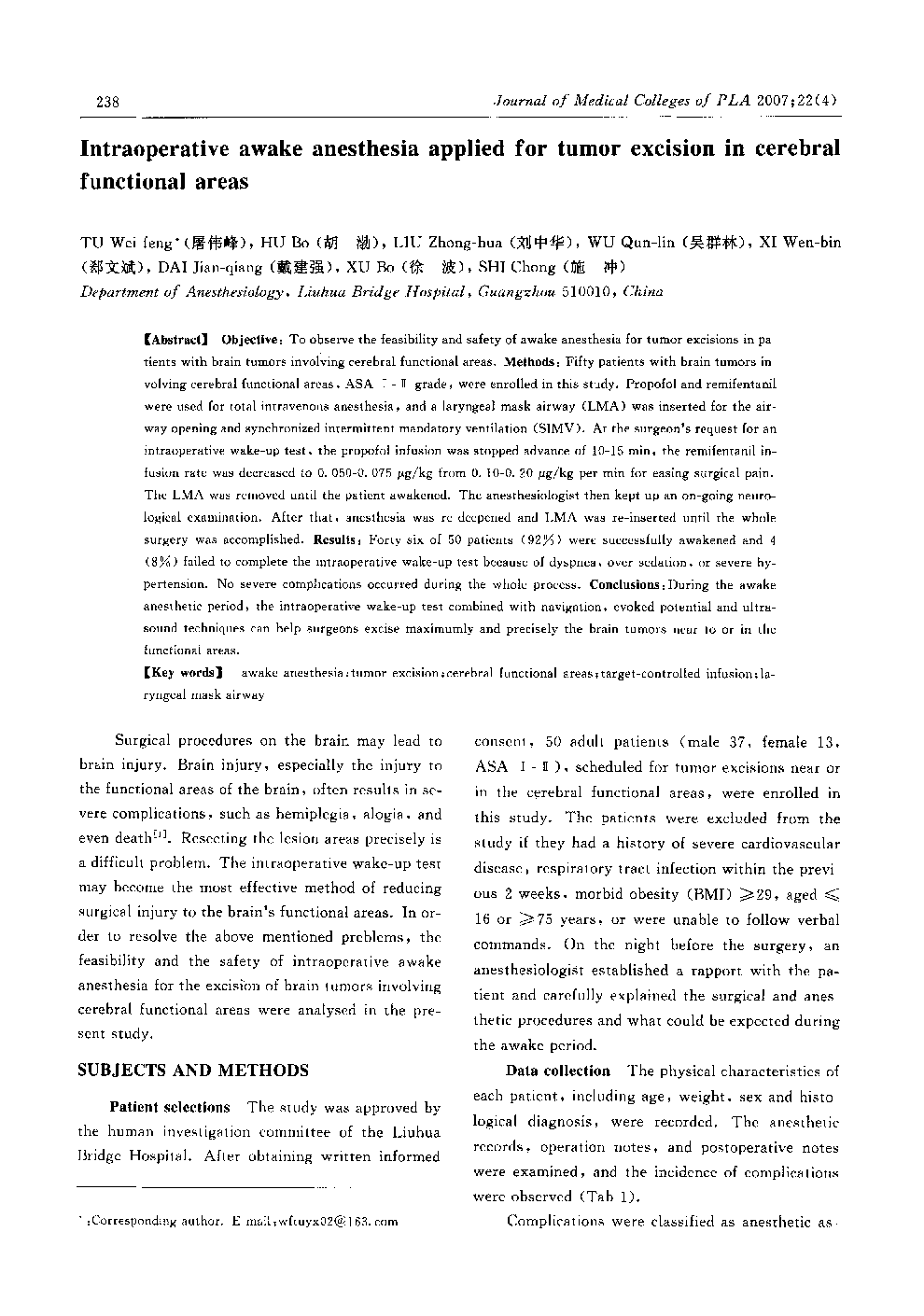| کد مقاله | کد نشریه | سال انتشار | مقاله انگلیسی | نسخه تمام متن |
|---|---|---|---|---|
| 3482914 | 1596835 | 2007 | 4 صفحه PDF | دانلود رایگان |

ObjectiveTo observe the feasibility and safety of awake anesthesia for tumor excisions in patients with brain tumors involving cerebral functional areas.MethodsFifty patients with brain tumors involving cerebral functional areas, ASA I - II grade, were enrolled in this study. Propofol and remifentanil were used for total intravenous anesthesia, and a laryngeal mask airway (LMA) was inserted for the airway opening and synchronized intermittent mandatory ventilation (SIMV). At the surgeon's request for an intraoperative wake-up test, the propofol infusion was stopped advance of 10–15 min, the remifentanil infusion rate was decreased to 0.050–0.075 μg/kg from 0.10–0.20 μg/kg per min for easing surgical pain. The LMA was removed until the patient awakened. The anesthesiologist then kept up an on-going neurological examination. After that, anesthesia was re-deepened and LMA was re-inserted until the whole surgery was accomplished.ResultsForty-six of 50 patients (92%) were successfully awakened and 4 (8%) failed to complete the intraoperative wake-up test because of dyspnea, over-sedation, or severe hypertension. No severe complications occurred during the whole process. Conclusions: During the awake anesthetic period, the intraoperative wake-up test combined with navigation, evoked potential and ultrasound techniques can help surgeons excise maximumly and precisely the brain tumors near to or in the functional areas.
Journal: Journal of Medical Colleges of PLA - Volume 22, Issue 4, August 2007, Pages 238-241